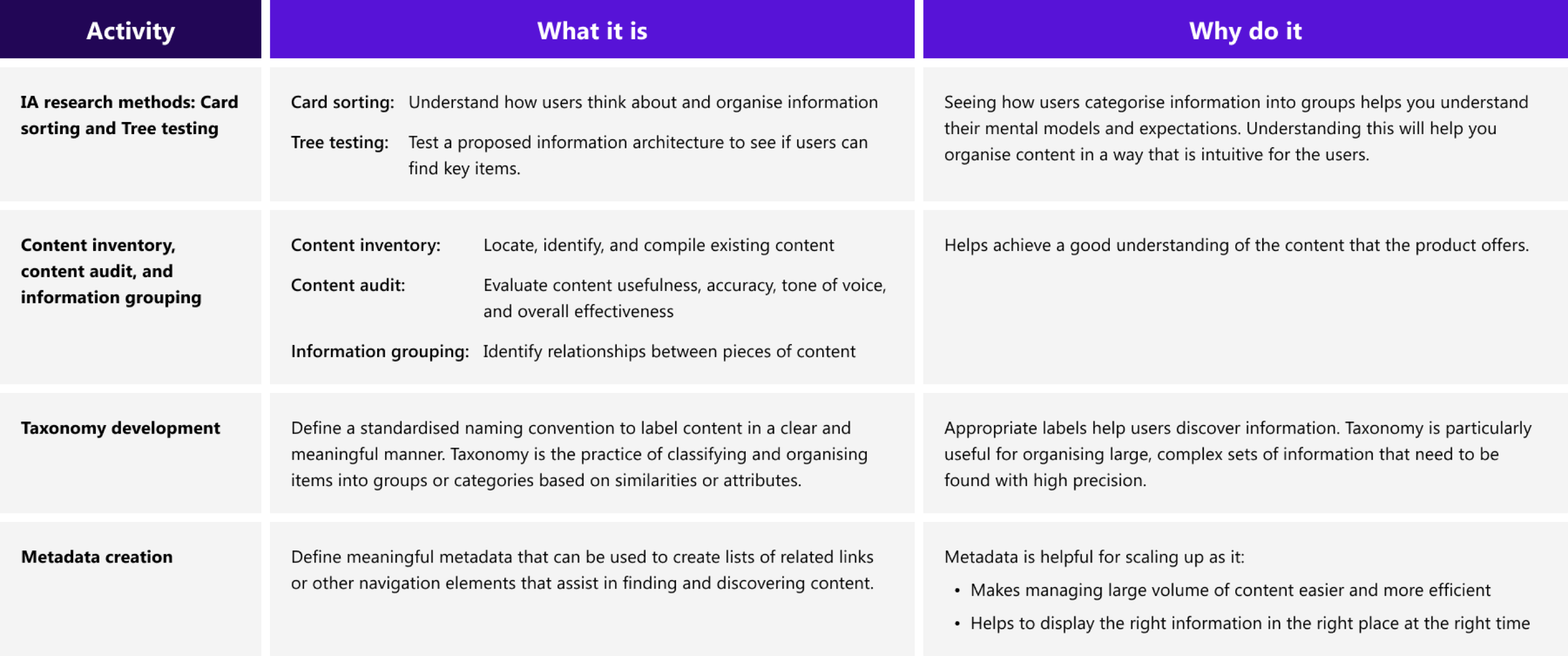¶ Information Architecture
¶ What it is
Information architecture (IA) is organising, structuring, and effectively labelling content that makes it easy to find and understand. IA design aims to help users quickly find Information, complete tasks, and achieve their goals. An effective IA prioritises users’ mental models and helps them understand where they are, the content they’ve found, and what's around.
¶ Why it is useful
A well-designed IA provides a flexible, sustainable, and scalable structure that meets the needs of both the owners and users of the product. By understanding the needs and behaviours of your users and designing the IA accordingly, you can improve the overall user experience and user satisfaction, reducing bounce rates.
¶ When to use it
IA design typically happens during the early stages of the design process, after assessing the users, context, and content, and before the creation of wireframes and prototypes. Throughout the process, IA may be reviewed and updated as needed to ensure that it continues to meet the users' and the business's goals.
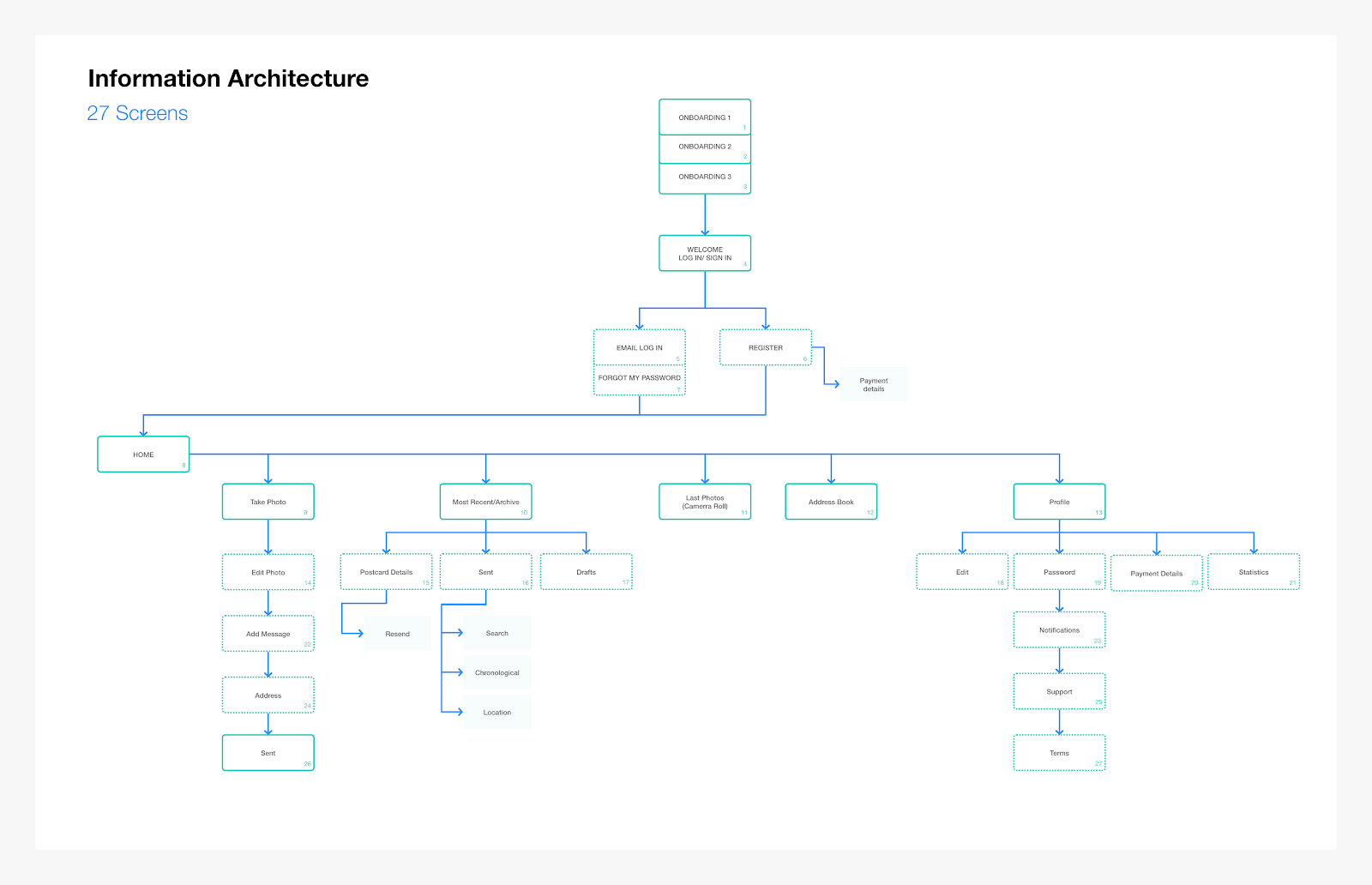
¶ How is it done
1. Understand the context, content, and users.
- Context refers to the environment in which the Information is presented (physical/digital, cultural/social), business goals, and available resources.
- Compile all the content of your website or application. It is essential to be aware of the nature and volume of current content and how that might change in the future (rate of growth and obsolescence).
- Users refer to the people who will be using the Information. It is essential to understand the users' needs, goals, levels of expertise, and Information-seeking behaviours.
2. Categorise, prioritise, and label content to help decide on how they should be structured and what should be included. Below are some standard techniques:
- Card sorting—Understand how users think and group Information
- Content audit & Information grouping—Evaluate content usefulness, accuracy, tone of voice, and overall effectiveness and identify relationships between pieces of content.
- Taxonomy development— Define a standardised naming convention to label content clearly and meaningfully. Taxonomy is classifying and organising items into groups or categories based on similarities or attributes.
3. Define the navigation (how users move through content) and create a site map using the previously established content groups and labels. A site map is a diagram that is a visual representation of the hierarchy of content and structure of the overall website or app.
4. Conduct user testing to see if your IA works. Tree testing can be used to see if users can find essential items.
¶ Do's & Don't
Do's
- Conduct thorough user research to understand your users' needs, goals, and Information-seeking behaviours.
- Use descriptive and meaningful labels for categories, subcategories, and individual pieces of content.
- Test and refine your IA to ensure that it is effective and user-friendly
Don't
- Don’t ignore the importance of considering the context and tailoring the IA to the needs and goals of your users.
- Don’t neglect to maintain and update your Information architecture as your content grows and evolves.
¶ Tools needed
- Excelor Google sheets
- Pen & paper (in-person card sorting) / OptimalSort or similar online card sorting tools (for remote/virtual card sorting)
- Miro, Lucid Chart, or other similar diagram creation online tools
- Treejack or other online tree-testing tools
¶ Example
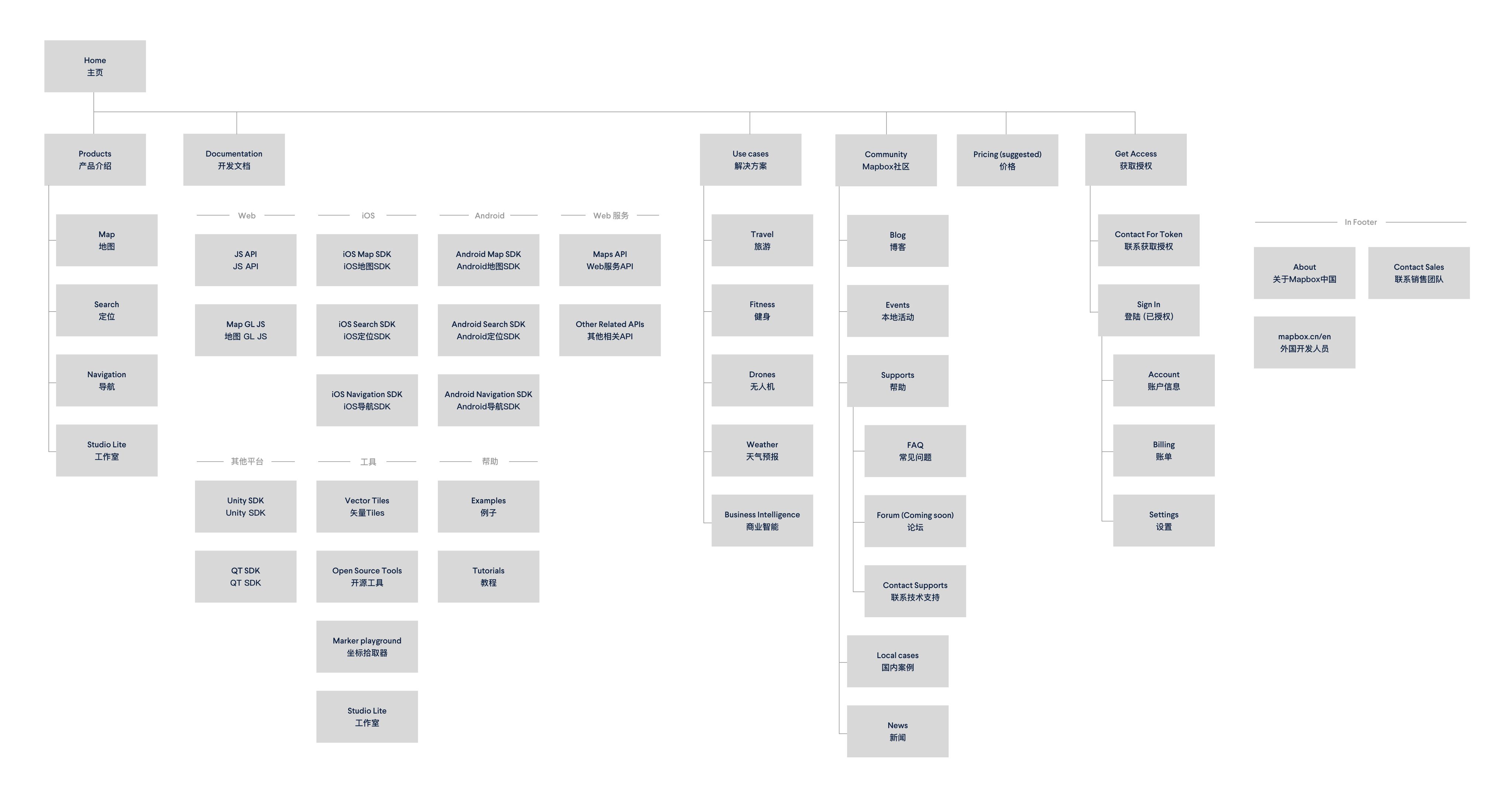
¶ GenAI Tool Use Case
¶ Optimizing the Information Architecture Creation
With QoQo AI's "Information Architecture" tool, you can create well-structured designs for websites or apps effortlessly. QoQo generates a draft tree structure to help you organize features and content in a logical and intuitive way.
Key Steps Tutorial:
- Open QoQo from the Figma plugin
- Select “Information Architecture" from the menu
- Enter detailed information
- Click the "Generate" button to complete
- Successfully generated
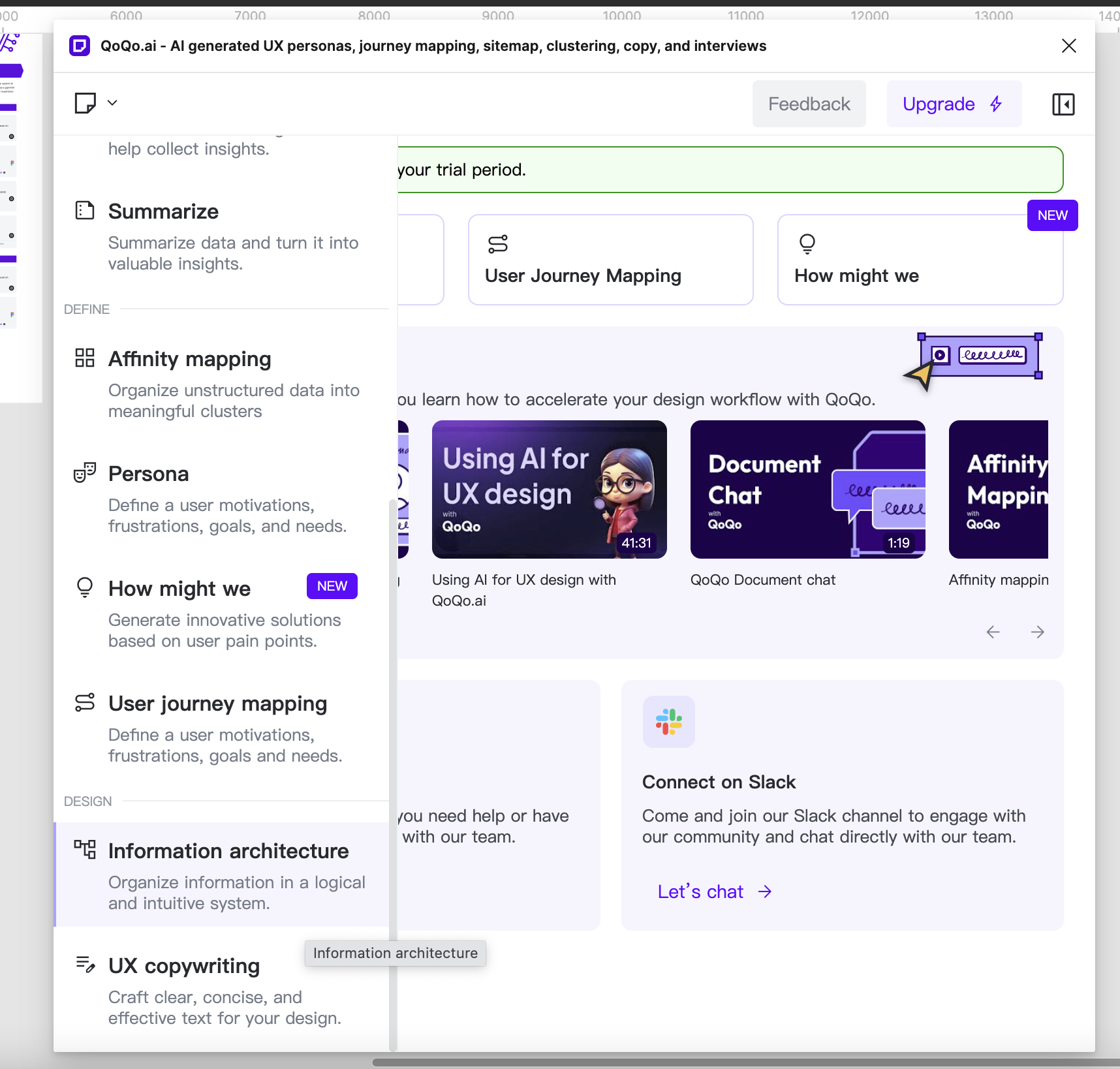
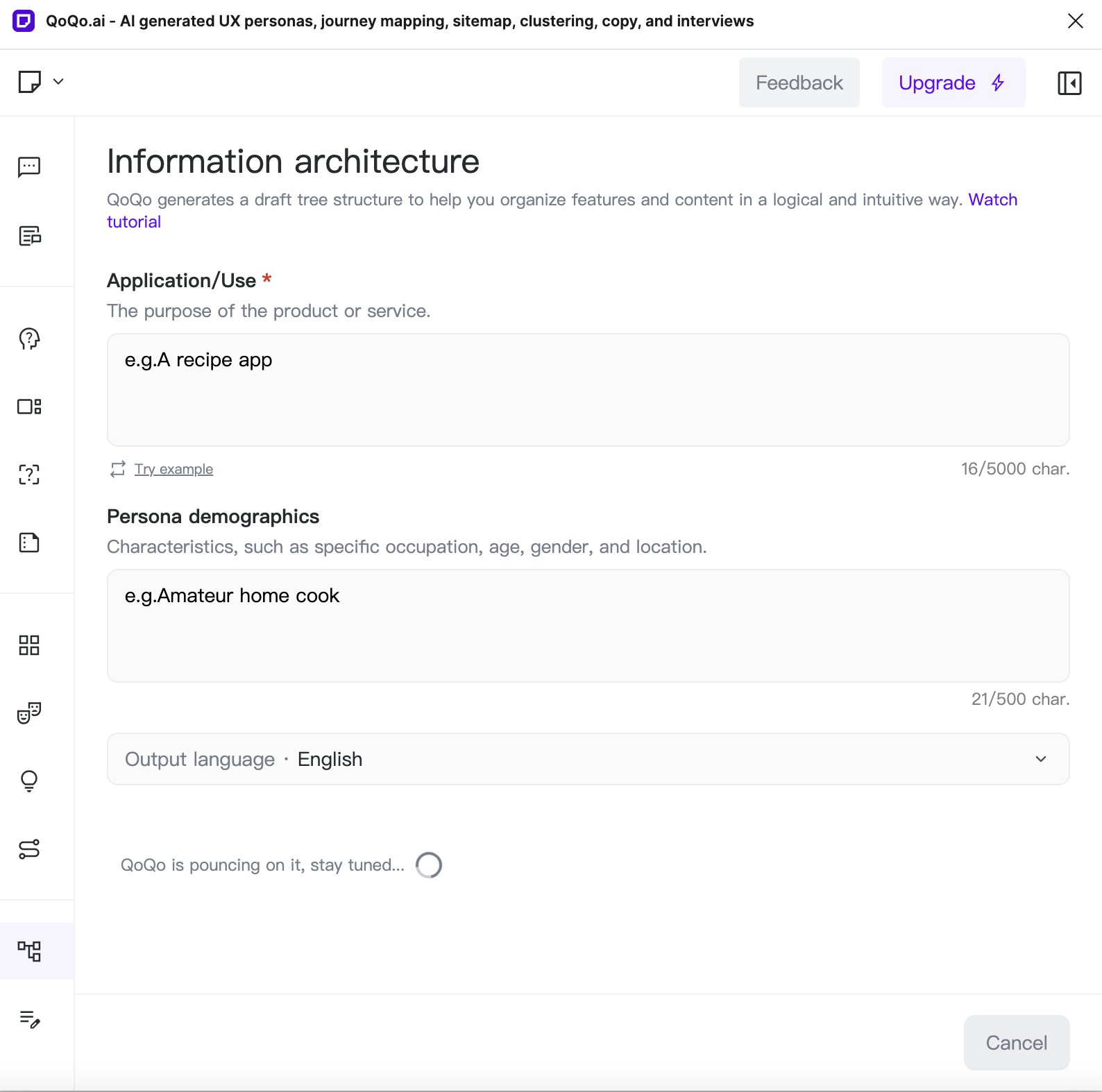
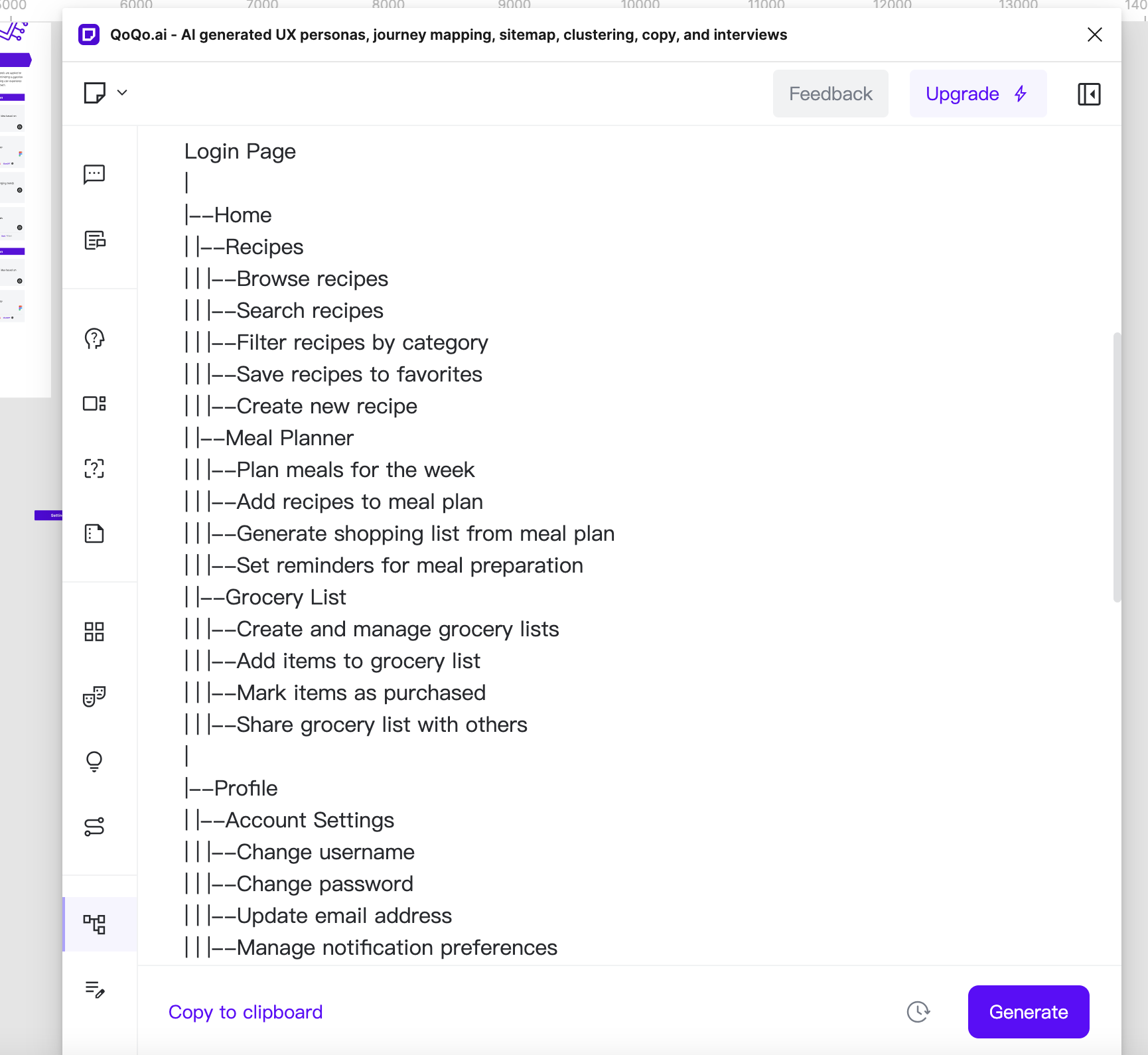
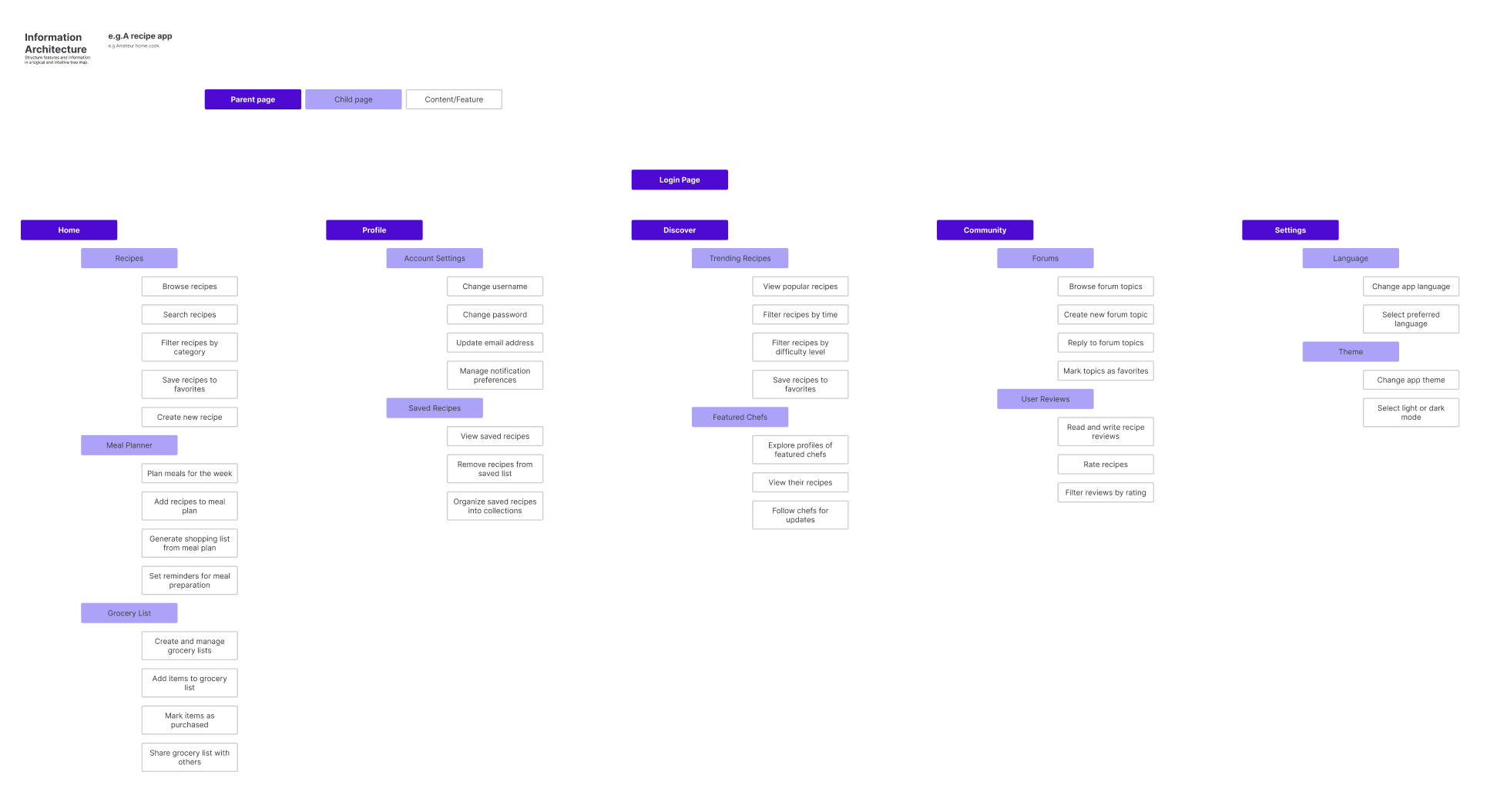
Read More:
AI in UX – how I saved time and improved user understanding
¶ Useful Tips
¶ Main Components of Information Architecture
Keeping these systems in mind will help structure your content effectively:
Organisation Systems
How you categorise and structure Information into groups or categories, such as by topic, date, or audience. They help users predict where they can find certain Information and understand the relationships between different pieces of Information. Good organisation systems should be based on the users' needs and tasks and be intuitive and logical.
Labelling Systems
How you represent Information, such as names and headings, that are used to describe the content and help users understand the Information. Good labelling systems should be clear, consistent, easy to understand, and based on the users' language and terminology.
Navigation Systems
How users browse or move through Information and access different parts of the website or application, such as menus, links, and breadcrumbs. They help users understand the layout of the website or application. Good navigation systems should be consistent, clear, and easy to use, providing users with a seamless experience.
Search Systems
How users look for Information, such as search engines, filters, and sorting. Good search systems should be intuitive, fast, and accurate and should also be able to handle different types of queries and return relevant results.
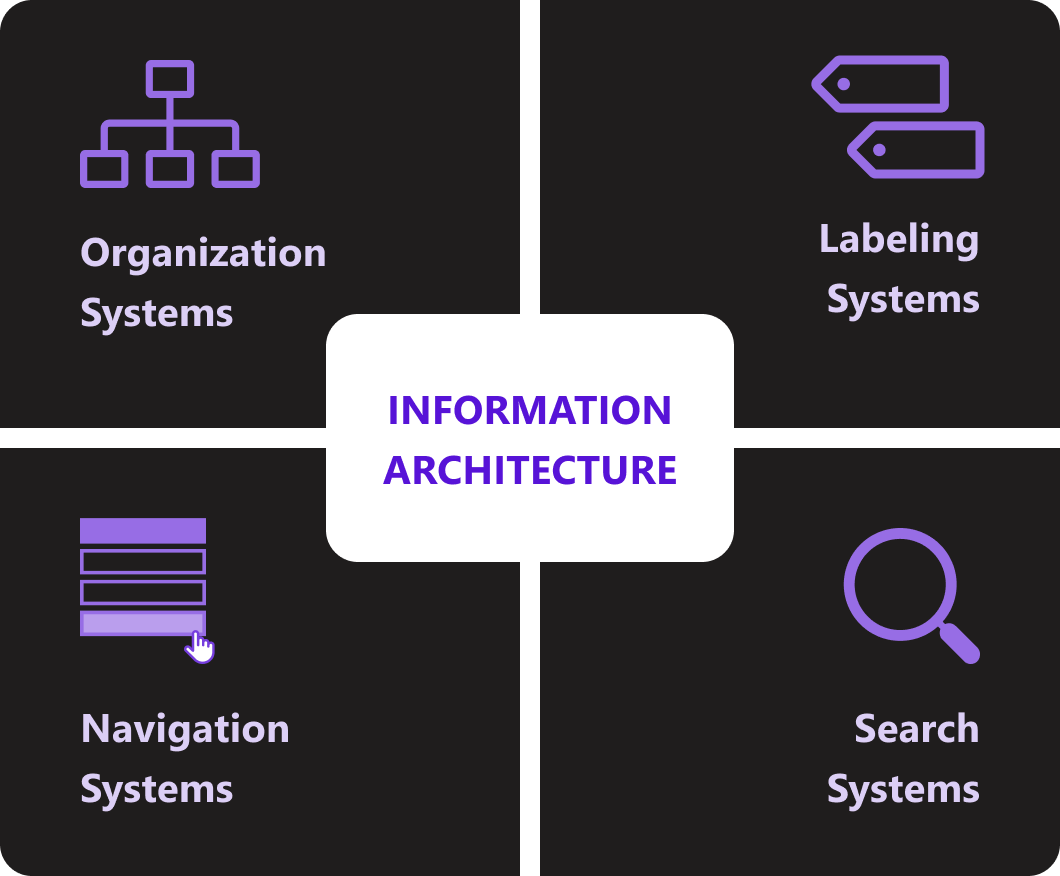
¶ Model for practising effective Information architecture design
Good Information architecture is Informationrmed by three connected elements:
Context
Refers to the environment in which the Information is presented (physical/digital, cultural/social), business goals, and the resources available. Understanding the context helps you meet user needs and make decisions that influence how they perceive your products/services.
- In what setting (physical and digital) are the users accessing the content?
- When, how, and why are users engaging with the content?
Content
Refers to the Information that makes up your website or application. It is important to be aware of the nature and volume of content that currently exists and how that might change in the future (rate of growth and obsolescence).
- What kind of Information is available?
- How is it relevant to the users?
Users
Refers to the people who will be using the Information. It is important to understand the needs, goals, levels of expertise, and Information-seeking behaviours of the users.
- Who are the people consuming the content?
- What value does your product/services provided have to meet user needs and goals?
- What are the pre-existing expectations users might have?
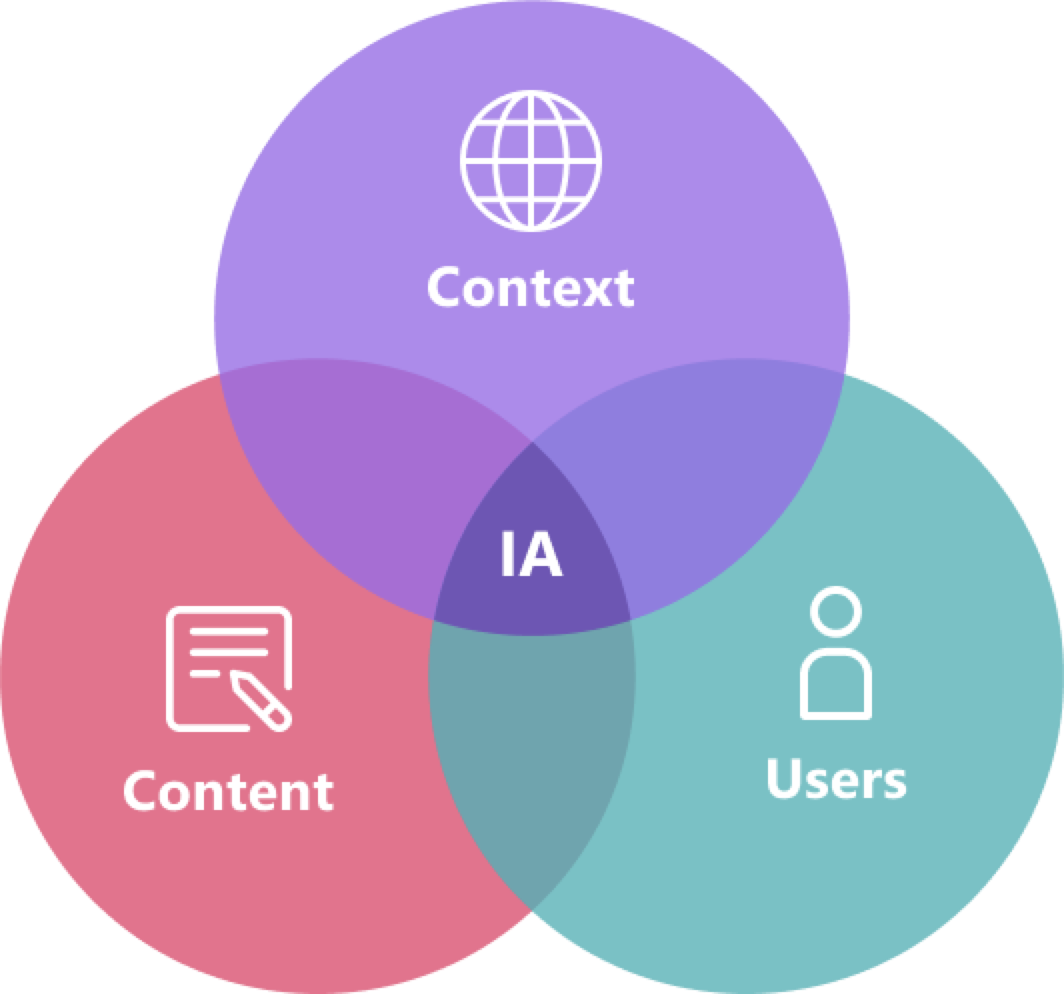
¶ Common activities to define Information Architecture
